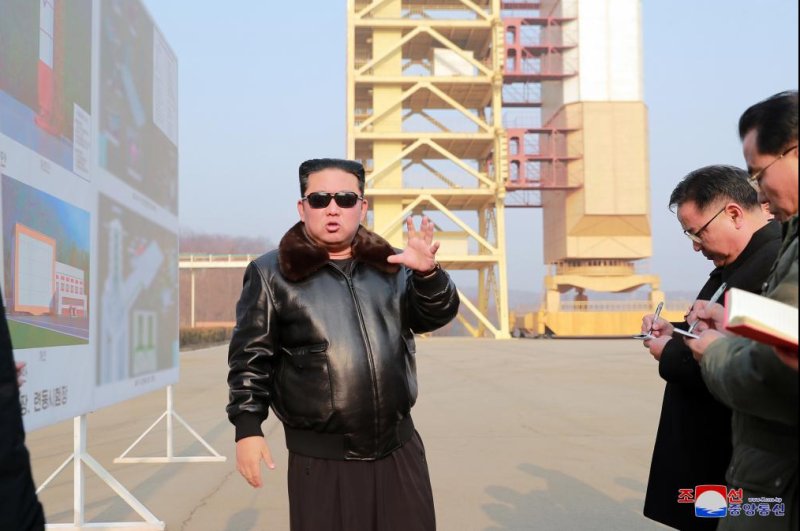1 of 4 | North Korean leader Kim Jong Un visited a satellite launching facility Friday that the Pentagon said could be used soon for an intercontinental ballistic missile test. Photo by KCNA/EPA-EFE
SEOUL, March 11 (UPI) -- A pair of recent missile launches by North Korea were limited trials of a new intercontinental ballistic missile system that the secretive regime may be planning to fully test soon, the Pentagon said.
Pyongyang has claimed its last two missile tests, on Feb. 27 and Mar. 5, were connected to a new reconnaissance satellite program. However, U.S. defense officials said Thursday that the satellite claim is a cover story for the continued development of an ICBM that the North first showed during a military parade nearly a year-and-a-half ago.
"The United States Government has concluded that these launches involved a new Intercontinental Ballistic Missile system that the DPRK is developing, which was originally unveiled during the Korean Workers Party parade on October 10, 2020," Pentagon spokesman John Kirby said in a statement.
The Democratic People's Republic of Korea is the official name of North Korea.
"The purpose of these tests, which did not demonstrate ICBM range, was likely to evaluate this new system before conducting a test at full range in the future, potentially disguised as a space launch," Kirby said.
After it was revealed at the October 2020 parade, North Korea claimed its Hwasong-17 missile was the world's largest mobile ICBM.
Observers have since been waiting for a launch, and some analysts have speculated that Pyongyang may be now testing its capability to deliver multiple nuclear warheads with the missile. Others have noted that North Korea is likely developing both its space program and its long-range missile capabilities simultaneously.
The Pentagon's assessment came as North Korean leader Kim Jong Un made a public visit to the country's Sohae satellite launching ground. According to a report in state-run media on Friday, Kim called for modernizing and expanding the facility to handle bigger rocket launches.
Washington said it wanted to expose the intentions behind Pyongyang's latest activities in order to ramp up pressure on North Korea to curtail its illicit weapons program.
"The United States is revealing this information publicly and sharing it with other allies and partners because we believe that the international community must speak in a united voice to oppose the further development and proliferation of such weapons by the DPRK," Kirby said.
"While the United States remains committed to a diplomatic approach, we will continue to take all necessary measures to ensure the security of the United States and our allies," he said.
U.S. Indo-Pacific Command said Thursday that it has begun stepping up surveillance, intelligence and reconnaissance activities around the Korean Peninsula.
The U.S. Treasury Dept. is also set to announce further sanctions against North Korea on Friday, according to several media reports based on a background briefing by an administration official.
The sanctions will help prevent North Korea from "accessing foreign items and technology that enable it to advance prohibited weapons programs," the official said, according to news agency Yonhap.
North Korea has not conducted any ICBM or nuclear weapons tests since 2017, but Kim Jong Un suggested in January that he was ready to reconsider lifting a self-imposed moratorium.
Pyongyang has conducted nine missile launches since the beginning of the year, and monitors have recently detected activity at both its Yongbyon nuclear reactor facility and its Punggye-ri nuclear test ground.















